OnePlus Announces OnePlus 8 & OnePlus 8 Pro: Step-Up 2020 Flagships
by Andrei Frumusanu on April 14, 2020 11:00 AM EST- Posted in
- Mobile
- Smartphones
- OnePlus
- Snapdragon 865
- OnePlus 8
- OnePlus 8 Pro
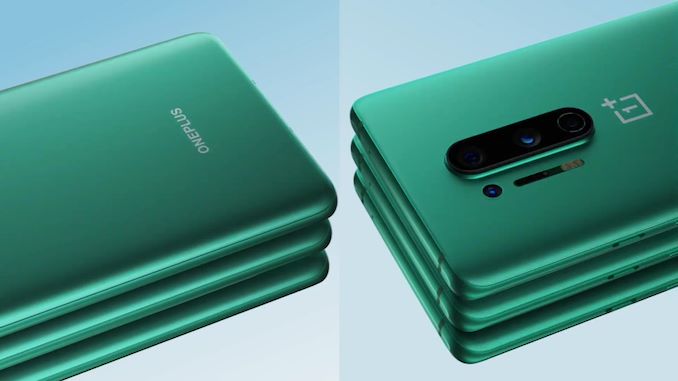
As the world is in quarantine, smartphone companies aren’t standing still and are still moving forward with their new product launches. We’ve seen almost every other company on the market release their 2020 flagships – but one important vendor has been missing from the line-up: OnePlus. Today, the company is finally revealing its newest OnePlus 8 and OnePlus 8 Pro phones, offering improvements and technology advancements at the highest levels.
Particularly the new OnePlus 8 Pro seems to be the company’s most prestigious flagship device ever, including a new QHD+ 120Hz display, a new generation 1/1.7” camera sensor from Sony along with interesting ultra-wide angle and telephoto modules, the company’s first time adoption of wireless charging – all new features on top of the existing ones that made the OnePlus 7 Pro a great phone in 2019.
| OnePlus 8 Series | ||
| OnePlus 8 | OnePlus 8 Pro | |
| SoC | Qualcomm Snapdragon 865 1x Cortex-A77 @ 2.84GHz 3x Cortex-A77 @ 2.42GHz 4x Cortex-A55 @ 1.80GHz Adreno 640 @ 587MHz |
|
| Display | 6.55-inch FHD+ 2400 x 1080 (20:9) 90Hz Refresh Rate |
6.78-inch QHD+ 3160 x 1440 (19.8:9) 120Hz Refresh Rate |
| SAMOLED HDR10+ |
||
| Dimensions | 160.2 x 72.9 x 8.0 mm 180 grams |
165.3 x 74.4 x 8.8 mm 199 grams |
| RAM | 8/12GB LPDDR4X | 8/12GB LPDDR5 |
| NAND Storage |
128/256 GB UFS 3.0 | |
| Battery | 4300mAh (16.55Wh) typ. | 4510mAh (17.36Wh) typ. |
| 30W Fast Charging | ||
| - | 30W Wireless Fast Charging (only via proprietary charger) 5W Qi Wireless Charging |
|
| Front Camera | 16MP f/2.0 |
16MP f/2.4 |
| Primary Rear Camera | 48MP 0.8µm 1/2" IMX586 (12MP 1.6µm 2x2 binning) f/1.75 w/ OIS |
48MP 1.12µm 1/1.4" IMX689 (12MP 2.24µm 2x2 binning) f/1.78 w/ OIS |
| Secondary Rear Camera |
16MP Ultra-Wide-Angle f/2.2 116° FoV |
48MP Ultra-Wide-Angle f/2.2 120° FoV |
| Tertiary Rear Camera |
2MP Macro Camera f/2.4 |
8MP Telephoto f/2.4 |
| Extra Camera |
- | 5MP Colour Sensor f/2.4 |
| 4G / 5G Modem |
Snapdragon 5G - Snapdragon Modem X55 (Discrete) (LTE Category 24/22) DL = 2500 Mbps - 7x20MHz CA, 1024-QAM UL = 316 Mbps 3x20MHz CA, 256-QAM (5G NR Sub-6) DL = 7000 Mbps UL = 3000 Mbps mmWave for OnePlus 8 (non-Pro) on Verizon in the US |
|
| SIM Size | NanoSIM + NanoSIM | |
| Wireless | 802.11a/b/g/n/ac/ax BT 5.1 LE, NFC, GPS/Glonass/Galileo/BDS |
|
| Connectivity | USB Type-C no 3.5mm jack |
|
| Special Features | On-screen fingerprint sensor, Stereo Speakers |
|
| IP68 Rating | ||
| Launch OS | Android 10 w/ Oxygen OS | |
| Launch Prices | 8+128GB: $699 / 699€ 12+256GB: $799 / 799€ |
8+128GB: $899 / 899€ 12+256GB: $999 / 999€ |
Starting off with the internal hardware, it’s a surprise to no one to see the new OnePlus 8 series being powered by Qualcomm’s Snapdragon 865 chipset. Alongside the chipset’s excellent performance and high power-efficiency is the key feature that it brings 5G cellular capabilities to both variants of the OP8, thanks to the X55 modem.
Although both variants sport the same chipset, OnePlus is amongst the first companies actually taking advantage of the Snapdragon 865’s ability to support both LPDDR4X and LPDDR5 DRAM standards – the OnePlus 8 comes with LP4X while the higher-end OnePlus 8 Pro sports the new LP5 memory. Qualcomm had divulged that they’re expecting a few percentage points performance differences between the two technologies, along with possible smaller efficiency differences. In terms of capacity, both variants come in either 8 or 12GB RAM configurations, depending on whether you chose 128 or 256GB main storage options, which by the way remains at UFS 3.0.
The designs of the phones are iterative on last year’s OnePlus 7 Pro aesthetics – with the big difference being in the front camera design choice and mechanism. The OP7Pro was notable as it was amongst one of the more popular phones out there sporting a mechanical pop-up camera housing. It was an interesting solution to get to a bezel-less in 2019, however it also came with some larger draw-backs, most notably in terms of internal hardware design complexity as well as a big increase in the device’s weight, and lack of water resistance.
The OnePlus 8 Pro makes away with the mechanical front-camera mechanism in favour of an in-screen hole cut-out, a design choice that’s been made quite popular over the last year and seemingly the “standard” for 2020 devices. Whilst I’m sure some people will be sad to see the pop-up camera go; I personally was never fan of it given the increased bulk of the phone. In the new OnePlus 8 series, the company has been able to instead increase the battery capacities, which now go up to 4510mAh on the OP8Pro and 4300mAh on the OP8, add in more camera (and bigger) sensors, and still reduce the weight of the phones by several grams, with the new OP8Pro now coming in at 199g (vs 207g for the 7Pro).
On the OnePlus 8, the company didn’t do major changes to the display characteristics compared to the intermediary generation OnePlus 7T – both phones still share an FHD+ displays with 90Hz refresh rate. On the new OnePlus 8 Pro however, the company spared no expenses as it has now opted for a 120Hz QHD+ AMOLED display. What makes this stand out compared to say Samsung’s QHD+ 120Hz S20 displays, is that OnePlus here is actually able to drive it at the full software rendering resolution. Alongside with its parent company’s Oppo Find X2 Pro, it makes the OP8Pro the only other flagship device capable of this feature.
OnePlus claims the display is capable of displaying 10-bit colour, which if true and without FRC, means that that this is the very first Android smartphone to include the feature, easily outdoing Samsung in terms of display capabilities.
If the display is even remotely comparable to the S20’s in terms of fluidity, I’m sure it will make for one of the key features of the OP8Pro. OnePlus even goes further and includes a video interpolation high-refresh rate mode that is able to convert lower fps video content to higher refresh rates – something most readers will be familiar with from their TVs. The big questions here of course is how the new phones will be able to handle the increased power consumption of the 120Hz mode, and if OnePlus one-upped Samsung in terms of effective high-refresh-rate power management.
The OnePlus 8 and OnePlus 8 Pro differ quite a lot in terms of their camera capabilities. The cheaper OnePlus 8 comes with just two “real” camera modules, a standard wide and ultra-wide, and here the hardware seemingly didn’t change all that much from the OnePlus 7 Pro. We’re still seeing the wide-spread IMX586 main sensor alongside with a 16MP unit for the ultra-wide, although with very slightly changes optics this generation, with a f/1.75 aperture lens on the main sensor, while the UWA remains at f/2.4. On top of these two primary modules, we’re seeing a 2MP macro camera. Frankly every phone I’ve encountered with such a dedicated macro module was pretty much a disappointment as the quality most of the time ends up atrocious – in essence the phone just only has 2 true rear cameras.
The OnePlus 8 Pro’s camera setup however is more impressive, and certainly more on par with what you’d expect from a 2020 flagship. OnePlus is amongst the first vendors to make use of Sony’s new IMX689 camera sensor. This unit differs from the IMX686 that we’ve seen employed in a few new phones this year in that it isn’t a 64MP sensor but rather remains at 48MP, all whilst still growing in sensor size from a 1/2” diagonal to a 1/1.4” size. This increases the pixel pitch from 0.8µm to 1.12µm – effectively increasing the pixel area by 1.92x, an almost doubling of light gathering ability of each pixel.
The new custom sensor also offers dual gain converters for dual analog native gain ISO levels – increasing low-light sensitivity all whilst retaining dynamic range in bright scenes. Much like on the newer Samsung sensors on the S20 Ultra, it comes with 2x2 OCL phase-detect pixels for focusing.
The ultra-wide-angle is also a new model. OnePlus here makes usage of a 48MP sensor, which is as far as I know the first phone with this kind of configuration. The optics include an f/2.2 aperture and the wide viewing angles measures in at 120°, a few degrees wider than the 116° of the regular OP8. Whilst the sensor should be more capable than the 16MP unit of the OP8, I have to wonder if OnePlus will limit its usage to 12MP binned pictures, as that would in effect result in lower resolution shots than the previous generation 16MP module. This all remain to be tested.
The telephoto is marketed as being an 8MP unit with f/2.4 aperture – we’re not sure if this is the same unit as on the OP7Pro, but if it is, it means that it’s actually a 13MP sensor with 2.2x optical magnification that’s cropped to 8MP and an effective 3x zoom.
Finally, there’s supposed to be a 5MP colour sensor as an extra module on the phone. Seemingly this is a module which lacks an infra-red filter and thus is able to capture a wider spectrum of colours – an effect that’s especially interesting in vegetation which appears white through IR.
OnePlus’ weakness in the camera department over the last few years has always been on the software front, with the image processing always ending up quite lacklustre compared to the competition. The OnePlus 8 Pro certainly now has the hardware to compete amongst the best 2020 flagships out there, so let’s hope the company’s software processing is also able to deliver.
Other features of the phones include stereo speakers, and an under-screen fingerprint scanner. Both phones come with up to 30W wired charging, but now OnePlus was able to finally add in wireless charging in the OnePlus 8 Pro, even doing so at 30W charging speed. It’s been a feature that was much requested over the past several years, so it’s great to finally see the company add this in.
Both phones come in three different colours each – Onyx Black in a glossy finish, Glacial Green in a matte finish, with additional exclusive colours of a glossy “Interstellar Glow” for the OnePlus 8 and a matte “Ultramarine Blue” for the OnePlus 8 Pro.
The OnePlus 8 series are available for pre-order in Europe starting right now with open sales starting April 21st, whilst in the US open sales start on April 29th. The OnePlus 8 starts at $699 for the lower 8+128GB variant and $799 for the 12+256GB version, while the OnePlus 8 Pro for the same storage options comes in at $899 and $999. Whilst certainly not the typically low OnePlus prices we’re used to from the past, if the new phones deliver on the camera quality, they still offer incredible value compared to the competition.



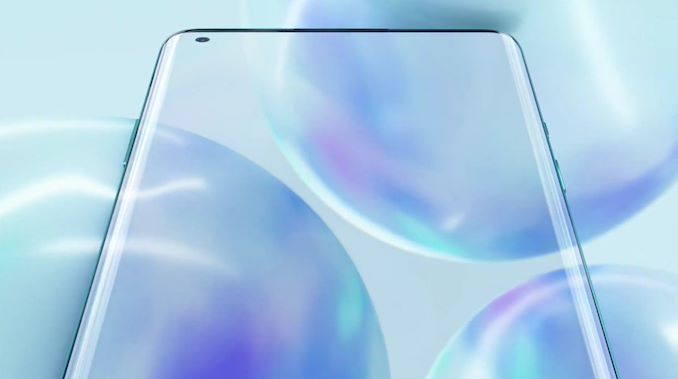

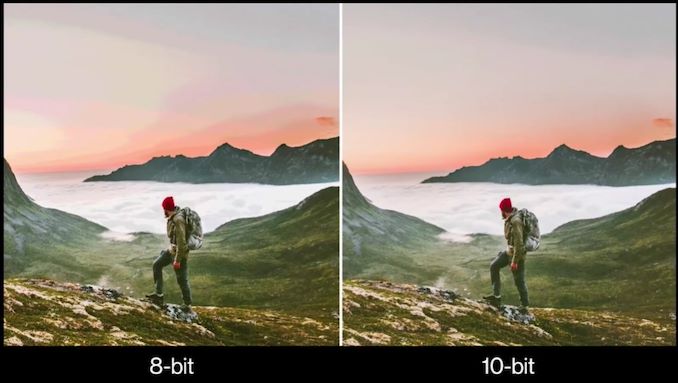
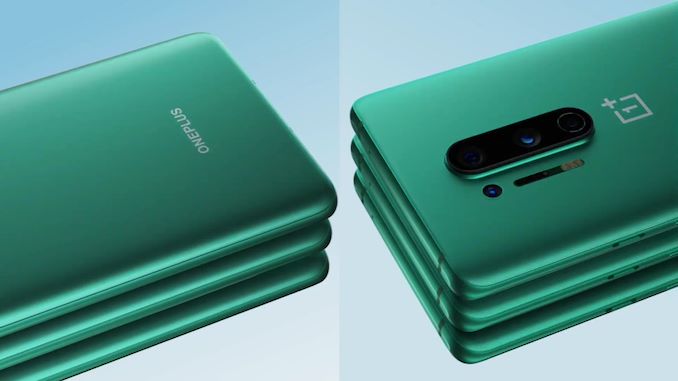




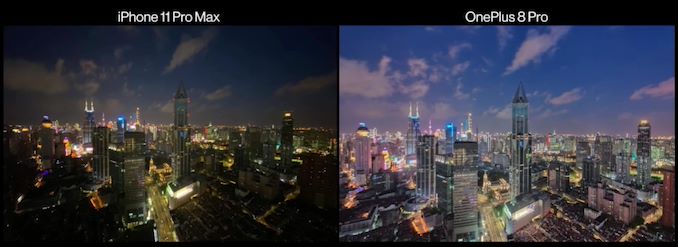
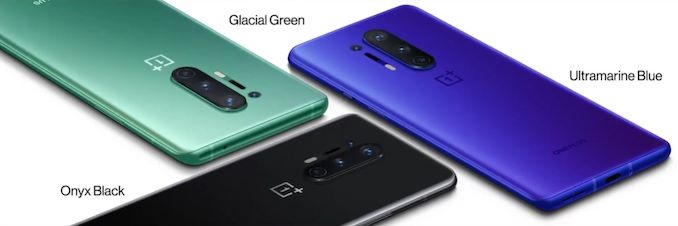










66 Comments
View All Comments
Kifak - Wednesday, April 22, 2020 - link
I am also with 7 Pro and do not see any reason to replace it.ikjadoon - Tuesday, April 14, 2020 - link
Is this the first OnePlus device that starts at $999, the 256 GB 8 Pro?A maximum of two years of updates for *the thousand dollar* high-end model, meanwhile a starting price of $699--the same base price as an iPhone 11.
So, is the Android update mess...still a mess? Is it surprised that Qualcomm mandated 5G on their high-end SoC instead of three years of BSP support for Android feature updates?
By current math, this $1000 phone will be out of official Android updates by late 2021.
ikjadoon - Tuesday, April 14, 2020 - link
*surprisingcha0z_ - Tuesday, April 14, 2020 - link
It's even worse, my note 9 is just one and a half years old and will not receive even oneUI 2.1, let alone android 11. 1000 euro phone... :)RSAUser - Wednesday, April 15, 2020 - link
Note 9 is definitely getting 2.1, it's busy rolling out as of 2 days ago, you just need to wait on carriers.Android 11 hasn't even been released yet...
cha0z_ - Wednesday, April 15, 2020 - link
All the news sites and leaks states that note 9 will not receive oneUI 2.1 + samsung said so when asked. ;)galaxy s10 and note 10 lines receive it right now from a week or so.
cha0z_ - Wednesday, April 15, 2020 - link
and I know android 11 is not out yet, just stated it will not rollout to note 9 and that's a fact. Samsung never release more than 2 major updates, no matter that note 9 literally released with android 8 a month after official android 9 (ooo, you can totally dev a skin on top of dev previews + you can totally do the more tricky/deeply integrated parts on the later previews that are mostly stable final). You can excuse them all you want, but I have also second hand iphone 6s on latest ios with day one major, minor, beta updates the same as my iphone 11 pro max. That 2015 phone is not only fully supported, but smoother and as fast as my unsupported exynos note 9. Ofc I will expect the same support as apple when samsung charges me the same for the phone, why wouldn't I? Back in the days the most expensive android phones costed half the price of an iphone and thus 2 years of software support was ok, especially when we consider that the technology moved fast in that sector leading to a really lots of new features never seen before or super big upgrades in speed every year. Now the technology matured, new meaningful features (not gimmicks) are not added and speed is decent + samsung charges as and in some cases like the s20 ultra - MORE than apple for their phones roflmao. Not to mention the exynos scam. Snapdragon 945 note 9 can play fortnite 60fps high and it runs smooth, my exynos 9810 don't even have a 60fps mode and stutters on 30fps medium @ !1080p!. If you think this is fair, ok, but I don't.MrCommunistGen - Tuesday, April 14, 2020 - link
Trying to NOT be an apologist here.Software support in Android as a whole is definitely a mixed bag and not where it should be.
OnePlus seems to be trying to build a track record of supporting devices for a longer period of time than some other manufacturers, but the tradeoff is that devices aren't being updated as often -- as in you're not getting monthly security updates.
For example, the OnePlus 6 was released in May 2018 and got Android 10. It didn't arrive as soon as the OP7 series, but still came out before many other flagships. Android 10 is still supposed to be coming for the OP5 series released in 2017, but is not out yet (at least not a final release build). The OP3 that was released in 2016 got Android 9 last year. They seem to be trending ~3 Android Version Upgrades per device but time will tell if they continue to hold to that going forward.
As for Security updates -- they seem to come every... 2-4 months(?), and when a patch comes out in... say March, it would be for February's security update.
I absolutely LOVE that Apple supports their devices for as long as they do -- the trend seems to be ~5 years. I wish that more manufacturers could do that and they should certainly strive to do so.
That said, there's some reality that gets in the way for Android... which is certainly why it has been such a mess for so long. As I see it Apple has a few enormous advantages over any Android manufacturer: Vertical Integration and Huge Amounts of money, tons of experience, and a history of generally great internal product execution. With each of the last several major Android releases, Google has introduced new initiatives to try to help with the problem -- which is slowly moving the needle. BUT they tend to leave a loophole where initiatives don't become mandatory unless a new device ships with the new OS (old devices upgrading tend to be exempt). As such just because a device is running the latest OS doesn't mean that it has all the latest features implemented that ease future upgrades (either first party or by the community). Again, this is likely to account for reality. If Google mandated that the new features were mandatory for upgraded devices, they'd probably just see future devices adopt newer versions of the OS due to companies being unwilling to put in the extra engineering work.
TLDR:
Android is still a mess, though improving from generation to generation. OnePlus seems to be a bit ahead of the curve for Android, but that could easily change. Apple is still significantly ahead in terms of upgrade longevity, frequency, and unity across products.
ikjadoon - Wednesday, April 15, 2020 - link
Thank you for such a detailed response. This is very valuable to know; my last Android phone from 3 years ago, ironically, was a OnePlus One with LineageOS, so I'm all kinds of behind.What's always been striking for me, which you touch on: what actually prevents smoother & reliable updates? It seems like 1) OEM ability to invest in software and 2) Google using more carrots than sticks.
Because, while true that Apple has far more money, all of these Android OEMs also can offload the *entire* operating system to Google. Apple still has to hire thousands of software engineers to develop, maintain, and implement iOS, iPadOS, tvOS, etc. Android OEMs have a fully functional, secure, reliable, and easy to use operating system on day 1. You'd think that cost offset would've helped Android manufacturers develop the bare minimum software competency to 1) update Android and 2) add their proprietary drivers (i.e., cameras, etc.).
Back in "my" day of the OnePlus One, we always blamed the SoC manufacturer either not providing the BSP (i.e., board support package, e.g., like the SoC firmware that makes it compatible with a version of Android) or only providing BSPs for older SoCs at an exorbitant cost that OEMs refused to pay for older phones.
I'm glad to see OnePlus *is* using software upgradeability as a defining feature, even if it's not to parity with iOS yet. But, again like you conclude, how many more decades do they need? Android was unveiled in 2007, over a decade and a half ago.
brucethemoose - Wednesday, April 15, 2020 - link
I think HTC's old infographic is still relevant: https://www.droid-life.com/2013/12/26/awesome-info...Google is shoving some shortcuts in there.. but we havent seen the fruits of that effort, and Im not up to date on it either.